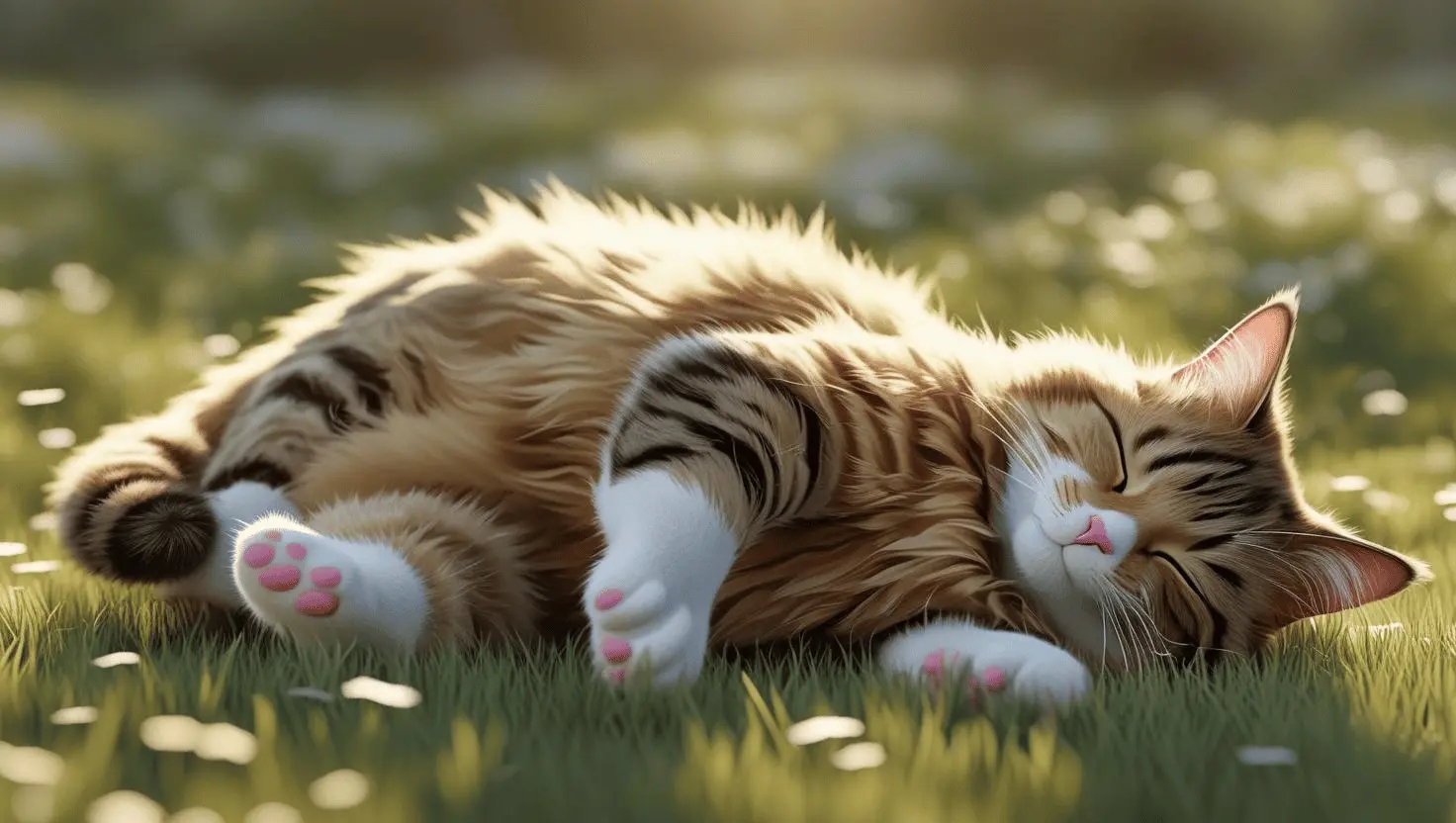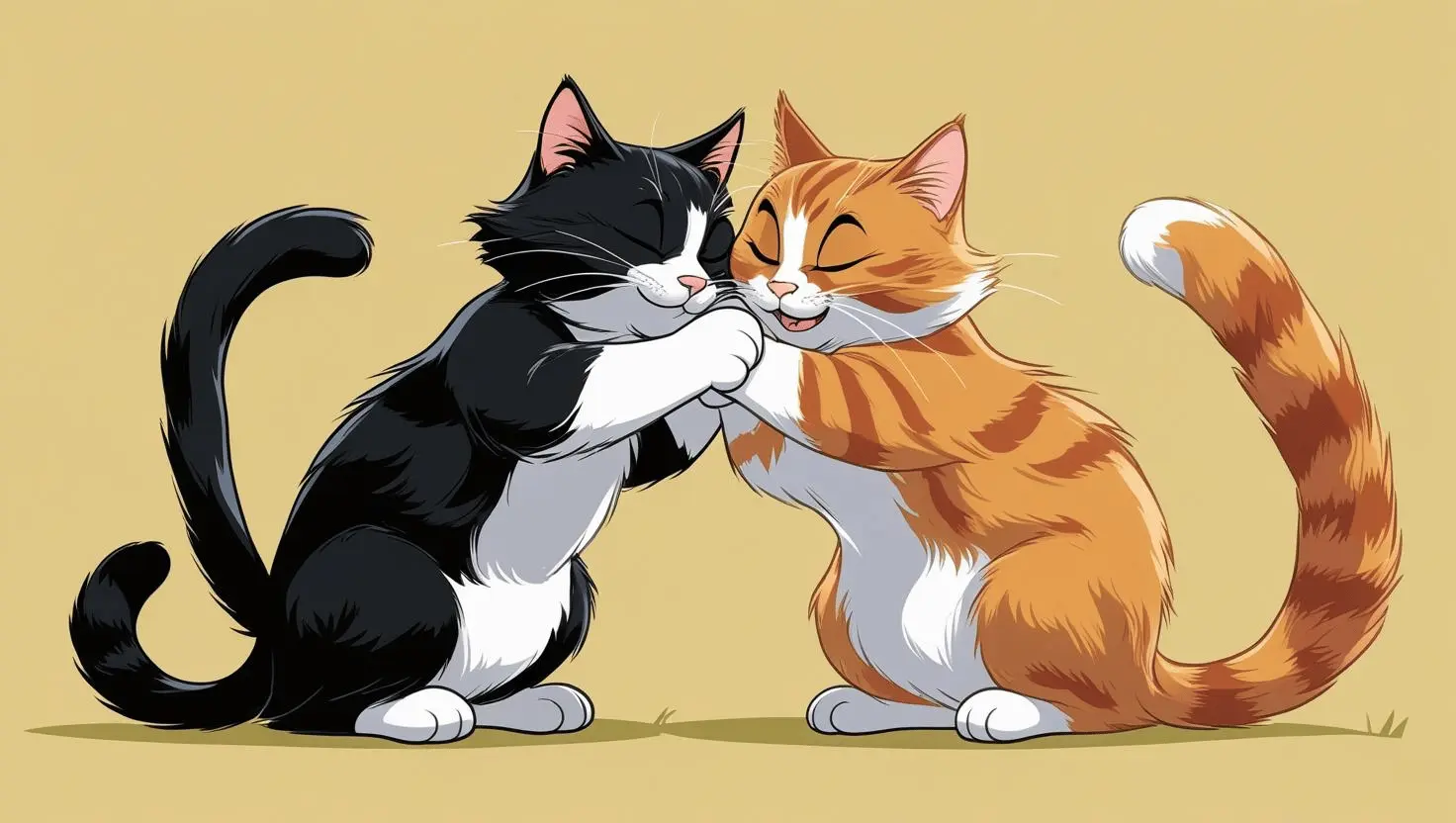Cats roll on the floor when they see you to express affection, mark their scent, seek attention, invite play, or simply show that they’re happy and comfortable in your presence. This action is part of their body language, and understanding it helps you connect better with your cat.
A Sign of Trust and Affection ❤️
One of the most heart warming reasons cats roll on the floor is to show love and trust. When a cat rolls over and exposes its belly, it’s demonstrating ultimate vulnerability — something cats only do when they feel completely safe.
How to Recognize Affectionate Rolling
- Your cat appears relaxed and calm.
- Soft purring or gentle chirping sounds.
- Slow blinking, often called “cat kisses.”
- May stretch its paws out invitingly.
Example: If your cat greets you after work by rolling on the floor near the door, it’s saying, “I missed you and I trust you!”
⚡ Pro Tip: Don’t assume an exposed belly means they want belly rubs. Many cats dislike belly touching and may gently swat or nip you if you try. Instead, pet their cheeks or chin — spots they truly love.
Seeking Your Attention 🐾
Cats are master communicators — without saying a word. When your cat rolls on the floor the moment you walk in, it could simply be their way of asking for attention.
Signs Your Cat Wants You to Notice Them
- Rolling near your feet while looking directly at you.
- Soft meows paired with rubbing or stretching.
- Repeating the behaviour until you respond.
Secondary Keyword: cat attention-seeking behaviour
Example: If your cat flops onto the floor while you’re working, it might be signaling
“Hey, stop staring at that laptop and look at me!”
⚡ Pro Tip: Acknowledge them. Talk softly, crouch to their level, or pet them gently. It strengthens your emotional bond and reassures your cat that you value their affection.
Related Posts
- Why Does My Cat Rub Its Face Against Me? 7 Cute Explanations
- Why Does My Cat Lick Me Then Bite Me? 9 Fascinating Reasons Explained
- Why Do Cats Meow at Night? 4 Fascinating Explanations
- Why Do Cats Knead Blankets and Pillows? 5 Surprising Reasons
Marking Territory With Scent 🐈⬛

Cats are scent-driven animals, and rolling on the floor is part of their instinct to spread pheromones. Their cheeks, flanks, and even paws have scent glands, and by rolling, they leave behind chemical messages.
Why Cats Use Scent Marking
- Claiming ownership → “This space is mine.”
- Creating a safe zone → Familiar smells provide comfort.
- Bonding with you → Mixing their scent with yours strengthens your relationship.
Example: If your cat rolls where you sit, it’s leaving its scent behind and blending it with yours. In the feline world, this is their way of saying:
“You’re part of my family now.”
⚡ Pro Tip: Avoid cleaning their “favourite rolling spots” too often. Over-sanitizing can remove familiar scents and make your cat feel unsettled.
Inviting Playtime or Belly Rubs 🎮
Sometimes, rolling isn’t just about bonding — it’s an invitation to interact. Younger cats and kittens especially roll on their backs to signal playfulness.
How to Know If Your Cat Wants to Play
- Rolling is combined with tail flicking or twitching.
- They paw at you gently or swipe playfully.
- Ears are perked and eyes are wide with excitement.
Example: If your cat rolls on the floor while staring at you intensely, grab a wand toy or feather teaser — they’re probably ready for an energetic play session.
⚡ Pro Tip: Use interactive toys rather than your hands. This keeps your cat engaged without encouraging unwanted scratching habits.
Expressing Happiness and Comfort 😺
Cats don’t always need a reason to roll — sometimes, they’re just feeling good. Rolling is a natural behaviour for stretching muscles and enjoying life.
Why Happy Cats Roll on the Floor
- Relieving tension after a nap.
- Enjoying sunlight or warmth on the floor.
- Celebrating your presence and expressing pure joy.
Example: If your cat rolls around purring when you enter the room, it’s their silent celebration of your return.
⚡ Pro Tip: Talk to your cat softly when they do this. Positive reinforcement helps strengthen your bond and builds trust over time.
When Cats Rolling Could Signal Problem ⚠️
Although rolling is usually harmless, excessive rolling or rubbing with irritation can indicate a health issue.
Possible Causes of Problematic Rolling
- Flea infestations causing constant itching.
- Allergies or skin irritation leading to discomfort.
- Abdominal pain or illness — especially if combined with vocalizing.
- Stress-related over-grooming or rubbing.
⚡ Pro Tip: If your cat rolls aggressively, scratches excessively, or has visible skin redness, consult a vet to rule out allergies, parasites, or infections.
How to Respond When Your Cat Rolls on the Floor 🐱
Your cat is communicating — and here’s how to respond positively:
- Acknowledge them → Talk softly and meet them at eye level.
- Pet gently → Stick to the cheeks, chin, and head unless your cat loves belly rubs.
- Engage in play → If they seem excited, offer toys for interaction.
- Observe patterns → Rolling combined with other signs can reveal their mood.
Other Cat Body Language You Should Know 🐾

Understanding rolling is just one piece of the puzzle. Here are a few more behaviours to decode your cat’s mood:
- Slow blinking → Deep affection and comfort.
- Tail wrapping around you → Claiming you as theirs.
- Kneading blankets → Reminds them of kittenhood and security.
- Headbutting → Social bonding and scent-sharing.
Learning these signals helps you strengthen your relationship and anticipate your cat’s needs better.
Common Questions
Why does my cat roll on the floor and purr?
It’s expressing love, trust, and happiness in your presence.
Why does my cat roll over when I come home?
Your cat is greeting you and wants attention, affection, or playtime.
Should I worry if my cat rolls too much?
Not usually, but excessive rolling combined with scratching or redness could indicate skin issues or allergies.
Why does my cat roll on the floor and rub its face?
It’s marking territory with pheromones while showing affection.

